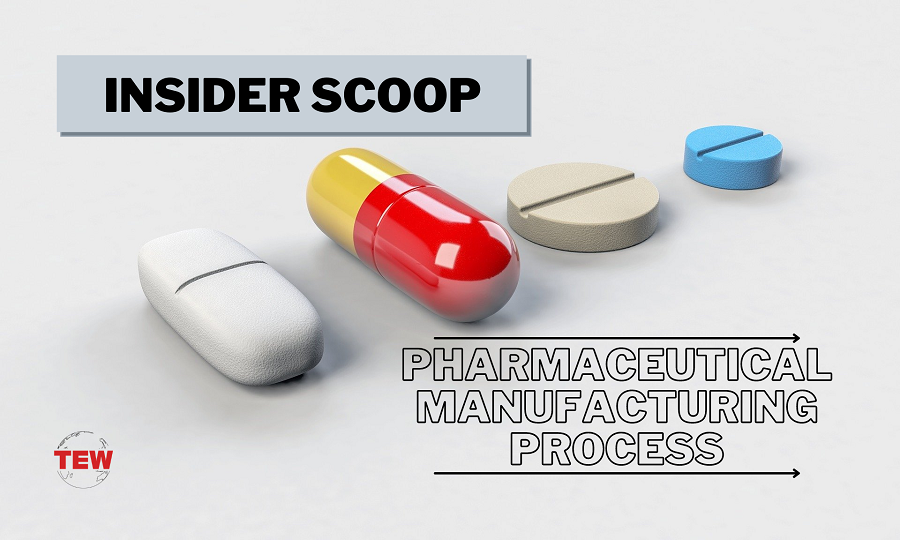The pharmaceutical manufacturing sector is a necessary part of health care systems throughout the globe. It comprises both public and exclusive organizations that discover, create, make, and market medicines. The pharmaceutical manufacturing market is based primarily upon scientific research study and the advancement of drugs that protect against or treat illness and disorders.
Modern clinical, as well as technological advancements, are speeding up the discovery as well as the growth of ingenious pharmaceutical manufacturing with improved therapeutic activity and also fewer side effects. Molecular biologists, medical drug stores, and pharmacologists all function to enhance the benefits of medicines through enhanced effectiveness and specificity.
Medication manufacturing is the procedure of industrial-scale production of pharmaceutical medicines by pharmaceutical manufacturing firms like The Green Ace online dispensary. The ways of medication manufactured can also be broken down into a collection of unit procedures. Milling, granulation, finish, and also tablet computer pressing are all possible parts of the procedure.
Drug Manufacturing Steps:
In continual manufacturing, raw materials and energy feed right into the system at a consistent rate, as well as at the same time, continuous removal of output items are achieved. The procedure performance is heavily dependent on the stability of the material flow rate. For powder-based continual processes, it is vital to constantly feed powders and properly right into the succeeding procedures in the line, as feeding is typically the primary step in production. Feeders are developed to achieve efficiency reliability, feed rate accuracy, as well as marginal disturbances.
With pharmaceutical manufacturing, various non-active active ingredients might be combined with the energetic pharmaceutical manufacturing component or ingredients to produce the final mix used for the solid dose type. The range of materials that might be integrated presents numerous variables that need to be attended to. These variables include the fragment size circulation, the particle type (spheres, rods, dices, plates, and so on), the visibility of moisture, bit surface residential or commercial properties such as roughness as well as cohesion, as well as powder flow residential or commercial properties.
Throughout the manufacturing process, milling is often obligatory to decrease the ordinary fragment size in a medication powder. There are several factors for this, including enhancing homogeneity and dose uniformity and increasing the solubility of the medical compound. Often duplicated powder mixing followed by milling occurs to boost the manufacturability of the blends.
There are two basic types of granulation: damp granulation as well as dry granulation. Granulation can be viewed as the opposite of milling. Little particles are linked to create bigger particles called granules. Granulation is made use of for various reasons. This prevents the “demixing” of components in the mixture by creating a granule with every one of the available raw materials and ingredients in their recommended proportions, which improves circulation qualities of powders and boosts compaction properties for tablet computer formation.
Warm thaw extrusion is utilized in pharmaceutical manufacturing strong dental dosage processing to enable the delivery of medicines with bad solubility and bioavailability. Warm thaw extrusion has been revealed to spread inadequately soluble medicines in a polymer carrier molecularly. The procedure encompasses the application of warmth, pressure, and frustration to blend materials and ‘extrude’ them through a tool die. Twin-screw high shear extruders blend materials and also break up bits at the same time. The resultant bits can be combined and compressed right into tablets or filled up into capsules. Each equipment plays a crucial role, like a premium dissolution apparatus.
Labs might use solidified carbon dioxide to cool medications for reaction selectivity, yet this cooling procedure ends up being complicated if utilized at a commercial size. The expense of cooling down a typical reactor to this temperature level is high, and the viscosity of the reagent can raise as the temperature lowers, resulting in difficult blending. This causes the added cost of stirring tougher and replacing components more frequently, or it brings about a non-homogeneous response.
Drug Production Tools:
The pharmaceutical manufacturing industry has accurate requirements and also manufacturing guidelines. Consequently, pharmaceutical manufacturing tools must adhere to excellent production practices. Drug production tools consist of an extensive range of devices, such as pill loading devices, x-ray assessment systems, tablet punches, and spray drying out accessories. Practically every procedure can be automated to guarantee precise production as well as formulation growth. The result of automation is that there is an item of pharmaceutical manufacturing tools associated with every action.
Solid and fluid components are mixed in compounding operations to create solutions, syrups, suspensions, pastes, and ointments. Had process tools and also transfer systems should be used in the compounding of extremely hazardous materials. Buffering agents, cleaning agents, and also antiseptics may threaten employees. Eyewashes as well as safety showers aid decrease injuries if workers inadvertently contact destructive or irritating compounds.
As a result of the wet surfaces in compounding areas, employees must be secured from the electrical dangers of tools and energies. As well as falls, Burns is stopped by the installment of insulation on warm surfaces and keeping dry, non-slip floors. Safety and security devices are equally as necessary to the drug manufacturing procedure.
Drug Production Considerations:
Synthesis operations have position several employee health and safety dangers. They consist of relocating maker components, pressurized tools, pipes, and the hefty manual handling of products and tools. More prospective threats are steam, warm fluids, warmed surfaces, and also warm work environment settings. Constrained rooms, harmful power sources, and high sound levels can all be dangerous.
Exposure to dangerous chemicals throughout synthesis procedures may cause persistent health risks for employees. Chemicals with extreme health effects can damage the eyes and skin, be corrosive or annoying to body cells or create suffocation or oxygen deficiency. Chemicals with chronic wellness results can create cancer or damages the liver, kidneys, lungs, or various other organ systems if mishandled.
The application of ideal control measures (for instance, process adjustments, engineering controls, management practices, personal and respiratory protective equipment) aids in limiting health and safety dangers.
Organic synthesis reactions may develop considerable process security threats from highly hazardous products, fire, explosion, or unchecked chemical reactions that affect the public around the plant. Refine safety can be complex with organic synthesis. Examining the dynamics of chemical reactions, together with the properties of highly dangerous products, assists with safety.
The training of operating and engineering personnel in emergency readiness and their feedback to the facility and the neighborhood community is likewise helpful. Some businesses specialize in procedure danger analysis to reduce the dangers of chemical synthesis operations. It’s necessary to take every preventative measure to ensure employees’ health and safety when pharmaceutical manufacturing.
Conclusion:
This short article provides an understanding of pharmaceutical manufacturing production. Platform situate potential sources of supply or sight information on detailed products.





